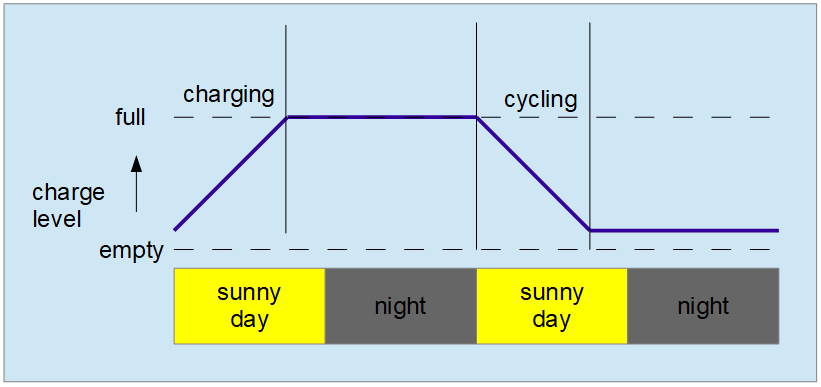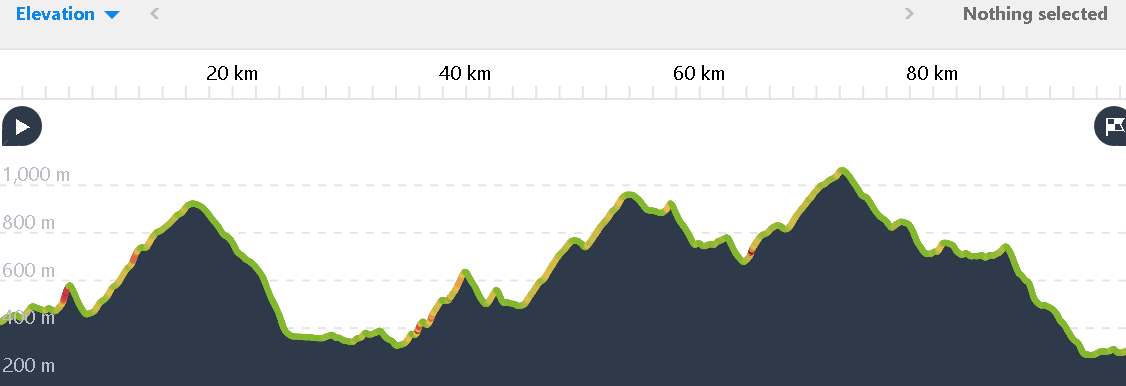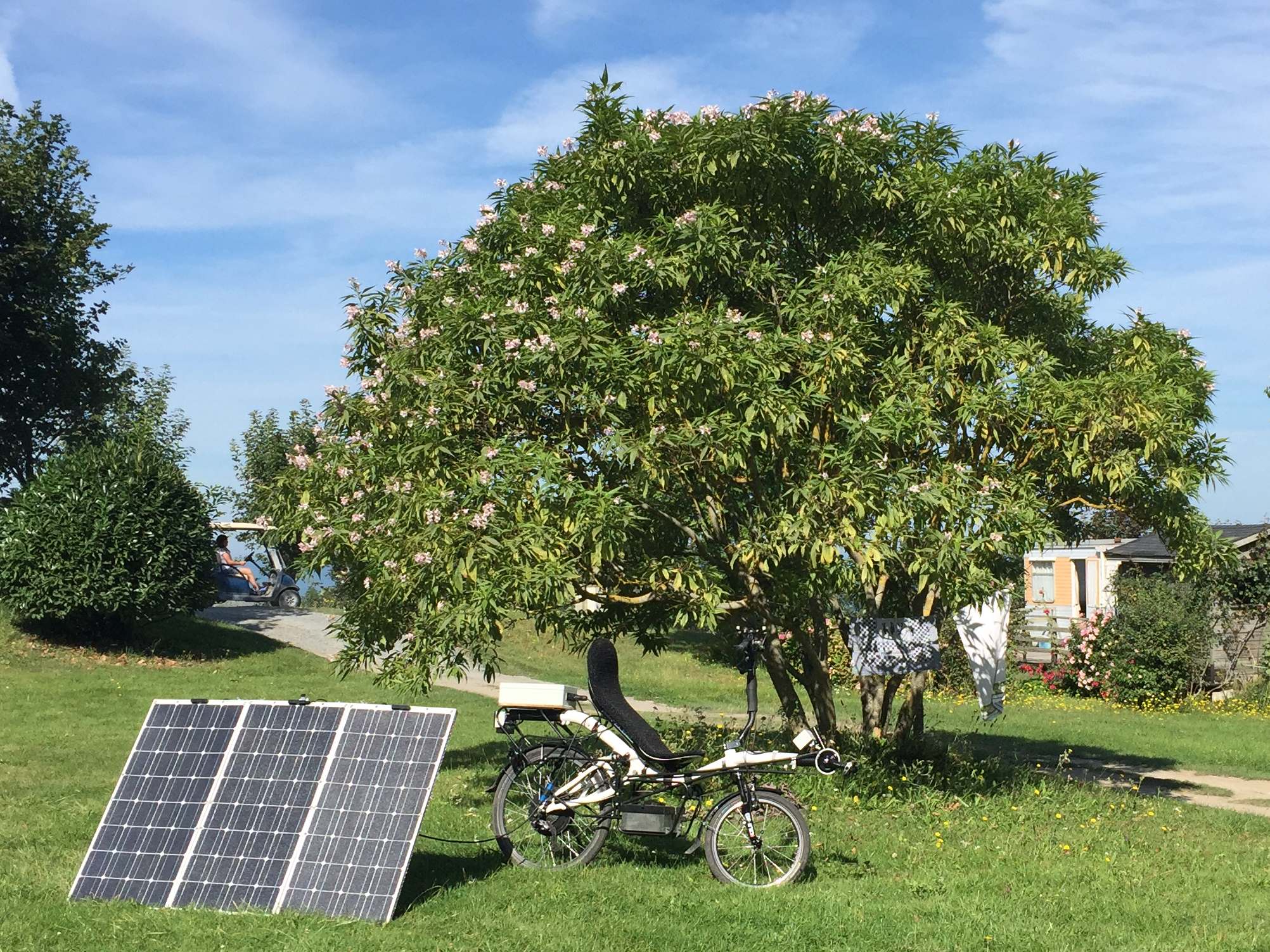cycling on solar power
When preparing for this trip I made a rough calculation that I would need 3 panels to power my bicycle. At each stop I would set up the 3 panels aim them at the sun collecting between 120..200W (total output of 3 panels) depending on the suns intensity. While cycling I still collect some power from the top panel but this energy is only a very small portion (20..30%) of the total energy needed for the trip.
On average the calculation worked out well but it is still a challenge to get the most out of the available daylight. In optimum conditions (crisp blue sky, flat surface, straight path and no wind) 4 hours of charge could get me 100kms away.
Choosing the best time for deploying the panels is still a challenge. When charging until the battery is completely full, there may be too little daylight left to cycle to the next destination. When leaving early there may be too little power in the battery to reach the next destination. So somewhere in the middle there is an optimum :
.jpg)
On a sunny day I can charge my battery at about the same rate as it discharges while cycling (150..200W). So it would be best to start cycling around in the middle of the day. The best balanced starting time would be around 13:00, and that is what I usually did.
On such days I would be pretty busy. After a while I discovered that staying two nights on a same place and using a whole day for re-charging and cycling a longer distance the next day feels more like holiday. By doubling the cycling distance I can still cover the same distances on average. (this is of course only possible when your battery is large enough).

Because the weather is the major decision-maker I kept a very close watch on the forecasts on http://www.wetteronline.de. Here you can look up weather at a specific location (city or village) in Europe. But even with these accurate forecasts there will often be surprises. The first thing I always did in the early morning is to look out of my tent. When I see blue sky I would hurry out to put the panels in a good position, but when I see grey sky I went back for some more sleep.
In Portugal at the coast there is often mist coming in from the ocean. If this happens it is best to start packing immediatly and try to catch the afternoon sun on your next stop. Usually the sun will burn through later in the day. Even in the south there can be those grey days without any chance of sunshine. On a really dark days the output of the panels may be only 5 to 10% of of the normal output. On such days you will come to a complete stop and need to find something else to do (like writing a blog). When cycling on solar power you just need to accept this. For me this is part of the charm of Suncycling.
MOUNTAINS
In mountain areas the battery runs out 2x to 3x faster than on a flat surface. Because cycling up-hill with an empty battery is virtually impossible for me, I need to prepare a mountain trip very carefully. Beforehand I check the height profile and the type of road surface in my navigation app. http://www.komoot.com. Both of these are of influence to the power consumption. Lots of small steep hills combined with low quality roads will run out the battery faster than a single mountain combined with a smooth surface.

The profile shown of a difficult mountain area that would be divided over 2 cycling days.
charging location : In mountain and wooded areas the sun is often blocked. After arrival on a new location I look for a spot with an open view to the eastern sky where the sun will rise. When there are lots of high trees I need to move my panels several times during the day. I can imagine that this may be a problem when campings are very crowded in the high season.
Tip : you can select your next campsite using satellite view mode of Google maps to see if there is a large portion of open space to place panels.

